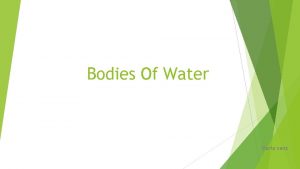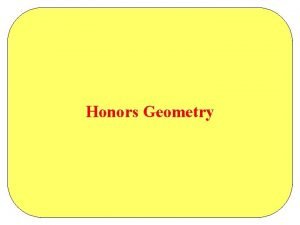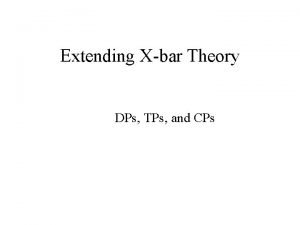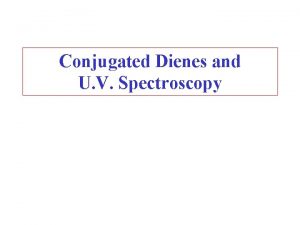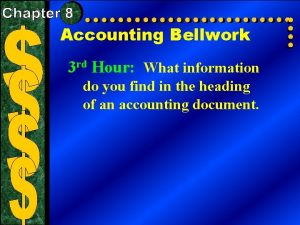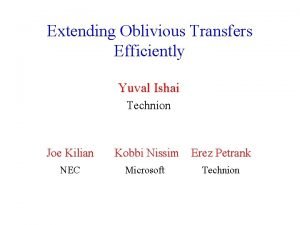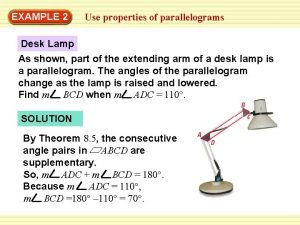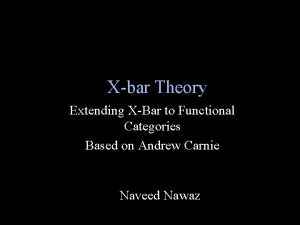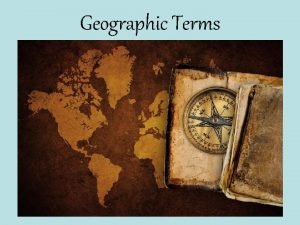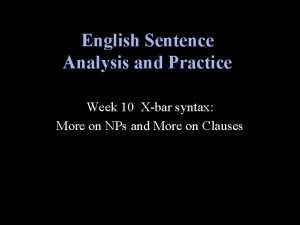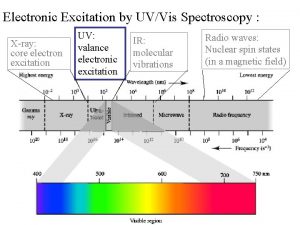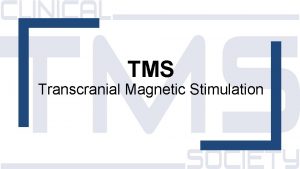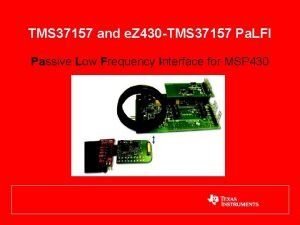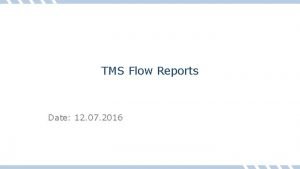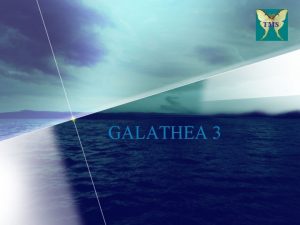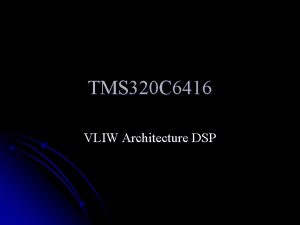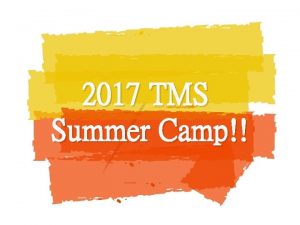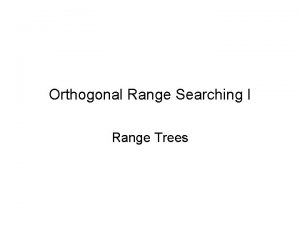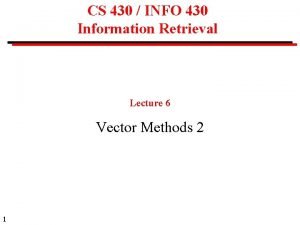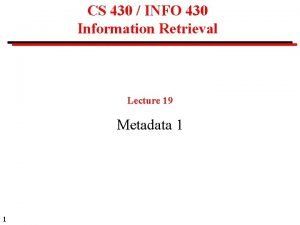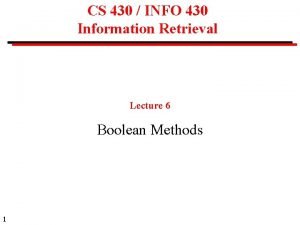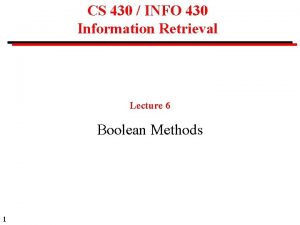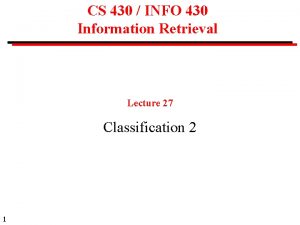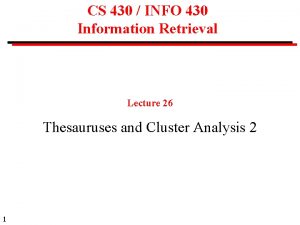Extending the Range of e Z 430 TMS

















- Slides: 17

Extending the Range of e. Z 430 TMS 37157 Pa. LFI RFID Applications TI Proprietary Information

Extended Range Applications ● The e. Z 430 -TMS 37157 kit range is limited to about 3 cm as shipped. This is acceptable for development purposes of many applications, but some applications require significantly longer range. Several factors affect the range that can be achieved. The tag/reader antenna size, quality factor (Q), and base station output power are proportional to the operational range. Antenna design and actual measurements will be examined in this application note.

Using External Power Supply to Increase Output Power

Reader Antenna Design ● Custom Antenna Design – There are many reasons why integrators may wish to make their own antennas: – The application needs special sized antennas – The antennas must be built into structures/equipment – The field needs to be more localized – Larger loops are needed to cover a wide area (road loops) – Another reason may be to achieve a greater reading distance but integrators are advised that reader antenna size is only one factor. Factors that influence read range include: – The size and shape of the tag’s antenna – The size and shape of the reader’s antenna – The transmitter power (limited by legislation) – Environmental noise

Antenna Magnetic Field Patterns TRP. 1 TRP. 2

Achieving Resonant Frequency is determined by the inductance (wire coil) and matching capacitance. ● In TMS 3705 A reader designs, like the e. Z 430 TMS 37157 base station, the antenna coil inductance should be ~440 u. H. This inductance is optimal due to the FSK modulation used that internally changes capacitance to shift frequency. The closest standard value matching capacitor is 3. 3 n. F. ● INDUCTANCE CAPACITANCE

Quality Factor – The Quality (Q) Factor is a measure of the effectiveness of an antenna. – A high Q antenna will output a higher field strength than a low Q antenna for the same input power. – A high Q antenna is also a filter and will reject signals outside the bandwidth. – Unfortunately, the higher the Q, the more easily the antenna is de-tuned by the presence of metal. – The e. Z 430 -TMS 37157 is intended for lower Q antennas (~10).

Quality Factor Calculation ● The Quality (Q) Factor of an antenna is given by – Where • • p = 3. 142 ƒ = 134200 Hz (134. 2 k. Hz) L = Self inductance (henries) R = Resistance @ 134. 2 k. Hz – Although the resistance should be measured at 134. 2 k. Hz because of the increasing skin effect with frequency - this formula will give an indication of the Q when measured as a DC resistance

Calculating Inductance of Coil ● ADU. exe can be used to estimate coil inductance at 134. 2 k. Hz.

LCR Meter can be used to accurately measure Inductance ● Choosing LCR Meter ● • Frequency of operation not critical • Must read in the µH range (resolution 0. 1 µH) • Must be portable (battery operated) • Must be robust

e. Z 430 -Pa. LFI Base Station 35 mm Antenna ● The inductance of the coil is 440μH at 134. 2 k. Hz with a Q of 30. With a parallel resistor (Rdamp) of 15 k the resonance Q is in a range of 10. This antenna is typical for vehicle immobilizer applications.

35 mm Antenna Coil Performance Results Tag Antenna Size Range with 35 mm Ring Antenna & USB Power Neosid 11 mm Memory Access: 6 cm MSP Access: 4 cm 10 cm x 5. 5 cm Memory Access: 16. 5 cm MSP Access: 11. 5 cm 50 mm Ferrite Memory Access: 13 cm MSP Access: 8. 5 cm 2. 5 cm diameter Memory Access: 10 cm MSP Access: 7. 5 cm

15 cm Diameter Circular Coil Example Calculation taken from: http: //emclab. mst. edu/inductance/circular. html Tag Antenna Size Range with 15 cm diameter Antenna & 12 V Supply Neosid 11 mm Memory Access: 15. 5 cm MSP Access: 10 cm x 5. 5 cm Memory Access: 46 cm MSP Access: 35 cm 50 mm Ferrite Memory Access: 37. 5 cm MSP Access: 27. 5 cm 2. 5 cm diameter Memory Access: 26 cm MSP Access: 19 cm

22 cm x 22 cm Antenna Coil Example Tag Antenna Size Range with 22 cm x 22 cm Antenna & 12 V Supply Neosid 11 mm Memory Access: 19 cm MSP Access: 13 cm 10 cm x 5. 5 cm Memory Access: 55 cm MSP Access: 43 cm 50 mm Ferrite Memory Access: 43 cm MSP Access: 33 cm 2. 5 cm diameter Memory Access: 31 cm MSP Access: 23 cm

50 cm x 25 cm Antenna Coil Example ● Insert ADU Tag Antenna Size Range with 50 cm x 25 cm Antenna & 12 V Supply Neosid 11 mm Memory Access: 14 cm MSP Access: 4 cm 10 cm x 5. 5 cm Memory Access: 59 cm MSP Access: 46 cm 50 mm Ferrite Memory Access: 44 cm MSP Access: 32 cm 2. 5 cm diameter Memory Access: 30 cm MSP Access: 20 cm

Results Matrix Tag Antenna Size Range with 35 mm Ring Antenna & USB Power Range with 15 cm diameter Antenna & 12 V Supply Range with 22 cm x 22 cm Antenna & 12 V Supply Range with 50 cm x 25 cm Antenna & 12 V Supply Neosid 11 mm Memory Access: 6 cm MSP Access: 4 cm Memory Access: 15. 5 cm MSP Access: 10 cm Memory Access: 19 cm MSP Access: 13 cm 10 cm x 5. 5 cm Memory Access: 16. 5 cm MSP Access: 11. 5 cm Memory Access: 46 cm MSP Access: 35 cm Memory Access: 55 cm MSP Access: 43 cm 50 mm Ferrite Memory Access: 13 cm MSP Access: 8. 5 cm Memory Access: 37. 5 cm MSP Access: 27. 5 cm Memory Access: 43 cm MSP Access: 33 cm Memory Access: 44 cm MSP Access: 32 cm Memory Access: 10 cm MSP Access: 7. 5 cm Memory Access: 26 cm MSP Access: 19 cm Memory Access: 31 cm MSP Access: 23 cm Memory Access: 30 cm MSP Access: 20 cm 2. 5 cm diameter Memory Access: 14 cm MSP Access: 4 cm Memory Access: 59 cm MSP Access: 46 cm

Conclusions Range can be increased significantly by using larger antennas. ● Higher output power also affects the range. ● LF Antenna design is simple. (No impedance matching involved like in HF(13. 56 MHz) ● In the example of the 50 cm x 25 cm antenna, it is important to note that read range for smaller tag antennas is actually less than the 22 cm x 22 cm. This is because the e. Z 430 -TMS 37157 base station does not provide enough output power to properly drive the antenna coil. ●
 As compared to long-range forecasts, short-range forecasts
As compared to long-range forecasts, short-range forecasts A high point of land extending into water
A high point of land extending into water Extending surface area and volume
Extending surface area and volume Extending x-bar theory
Extending x-bar theory Grassland landforms
Grassland landforms Double bond extending conjugation
Double bond extending conjugation Problem 8-3 extending amounts across the work sheet
Problem 8-3 extending amounts across the work sheet Extending oblivious transfers efficiently
Extending oblivious transfers efficiently Parallelogram desk
Parallelogram desk Karyotype
Karyotype Extending x-bar theory to functional categories
Extending x-bar theory to functional categories A pointed piece of land extending into the sea
A pointed piece of land extending into the sea Codominant biology definition
Codominant biology definition Colorblind punnett square
Colorblind punnett square Section 1 chromosomes and phenotype study guide a
Section 1 chromosomes and phenotype study guide a Emerging proficient extending
Emerging proficient extending X bar theory exercises with answers
X bar theory exercises with answers Spectrum xray
Spectrum xray

